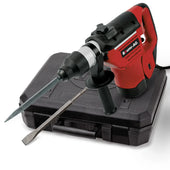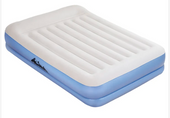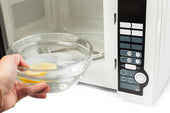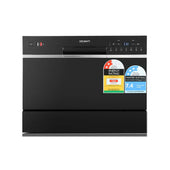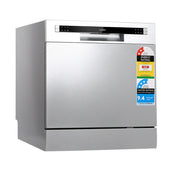Introduction: Understanding the Importance of a Kitchen Sink Replacement
A kitchen sink is more than just a functional element; it serves as a central part of daily household routines. Over time, wear and tear can lead to leaks, rust, or diminished functionality, making replacement necessary. Upgrading a black kitchen sink also allows for improved aesthetics and compatibility with evolving kitchen designs. A modern sink may provide added convenience, such as deeper basins or enhanced features like integrated strainers. By addressing signs of damage or inefficiency, homeowners can prevent water wastage and potential structural harm. Understanding the value of this process ensures a well-prepared and effective installation experience.
Tools and Materials You’ll Need to Replace Your Kitchen Sink
Replacing a kitchen sink requires the right combination of tools and materials to ensure a smooth process. Gather the following:
Tools:
- Adjustable wrench for tightening and loosening connections.
- Pipe wrench for removing stubborn pipe joints.
- Screwdriver set (flathead and Phillips) for loosening clips and screws.
- Putty knife to scrape off old sealants and caulk.
- Utility knife for cutting caulking or trimming materials.
- Bucket to catch any residual water.
- Pliers to assist with removing smaller fittings.
- Tape measure to ensure accurate measurements.
Materials:
- Plumber’s putty to create watertight seals.
- Silicone sealant for the sink edges.
- Replacement sink in your chosen size and style, such as a white kitchen sink.
- Sink clips to secure your sink.
- Plumbing tape for leak-proof pipe connections.
- New tap (optional) if upgrading.
Preparation helps simplify the installation.
Assessing the Current Setup: Inspecting the Plumbing and Countertop
Before replacing a kitchen sink, it is essential to inspect the existing plumbing and countertop configuration to avoid unexpected challenges. Begin by examining the plumbing underneath the sink. Check for any signs of leakage, corrosion, or wear on pipes, fittings, and the P-trap. Ensure compatibility between the current plumbing layout and the dimensions of the new double kitchen sink.
Evaluate the countertop for damages such as cracks, swelling, or uneven surfaces that might hinder installation. At During Days, we recommend verifying the precise cut-out dimensions of the sink opening to match the replacement model. Note the condition of any sealant or caulking around the edges. Address all discrepancies before proceeding.
Turning Off the Water Supply and Preparing the Workspace
-
Shut off the water supply: Locate the valves under the sink, typically found at the base of the cabinet. Turn both the hot and cold water valves clockwise until fully closed. If no individual valves exist, switch off the main water supply to the house.
-
Test the shutoff: Open the faucet to ensure the water flow has completely stopped. This step prevents any unexpected leaks or water damage during the process.
-
Disconnect utilities: Switch off the power for any appliances connected to the sink, such as a garbage disposal. Unplug all cords for added safety. This is especially important when replacing an undermount kitchen sink.
-
Clear the space: Remove any items stored in the cabinet under the sink. Wipe down the area for easy access to plumbing fixtures and tools.
-
Lay protective materials: Place towels or a bucket beneath the sink to catch any residual water during disconnections. Use padding to protect countertops from scratches.
Removing the Old Sink: Step-by-Step Guide
-
Turn Off the Water Supply Locate the shut-off valves beneath the sink and turn them clockwise to stop water flow. If there are no shut-off valves, turn off the main water supply.
-
Disconnect the Drain Pipes Place a bucket under the sink to catch water. Unscrew the nuts connecting the drain pipes and trap using adjustable pliers.
-
Disconnect the Water Lines Detach the hot and cold water supply lines with a wrench. Be cautious, as there may still be residual water.
-
Remove Clips and Adhesive Look for mounting clips under the countertop. Loosen these with a screwdriver. Use a putty or utility knife to break the seal of any caulk or adhesive around the single bowl kitchen sink.
-
Lift Out the Old Sink Carefully lift the old sink out of the countertop. If it sticks, gently pry it with a flathead screwdriver to avoid damaging surrounding surfaces.
How to Handle Plumbing Disconnections Safely and Efficiently
Properly disconnecting plumbing is crucial when replacing a kitchen sink. Begin by turning off the water supply using the shut-off valves located beneath the sink. If these are absent or malfunctioning, turn off the main water supply to the house. Open the faucet to release any remaining water pressure.
Next, use a wrench or pliers to unscrew the water supply line connections from the faucet, ensuring a bucket or towel is placed underneath to catch drips. Detach the P-trap from the drainpipe, loosening the slip nuts carefully. Inspect pipes for damage during disconnection, and label parts to simplify reassembly later.
Preparing the Countertop for the New Sink Installation
Before the new large kitchen sink can be installed, proper preparation of the countertop is essential to ensure a secure and clean fit. Follow these steps:
- Remove Residue or Old Sealant: Scrape off any remaining adhesive or sealant using a putty knife. Ensure the surface is smooth and free of debris.
- Inspect the Cut-out Area: Check the sink cut-out for any damage or uneven edges. Smooth out imperfections with sandpaper if necessary.
- Measure and Mark: Confirm the dimensions of the new sink. If it differs from the old one, trace the required outline and adjust the cut-out using a jigsaw.
- Clean Thoroughly: Wipe down the workspace with a damp cloth to remove dust and particles, allowing strong adhesion later on.
These preparatory actions create an optimal surface for a secure and watertight installation of the new sink.
Installing the New Sink: Proper Positioning and Securing
Begin by carefully lowering the new ceramic kitchen sink into the countertop opening to ensure a precise fit. Check that all edges align flush with the countertop and sit evenly. Adjust the sink where necessary, taking care to follow the manufacturer’s alignment marks or specifications.
Next, apply a bead of silicone sealant underneath the edge of the sink rim. This will provide a watertight seal between the sink and the countertop. Gently press the sink down to secure its position.
Use the provided clips or brackets to fasten the sink from underneath. Tighten the screws evenly on all sides to prevent warping or gaps.
Connecting the Plumbing and Ensuring a Leak-Free Setup
Properly connecting the plumbing is a crucial part of replacing a kitchen sink. Begin by attaching the drain pipes to the sink’s strainer or waste outlet, ensuring snug connections. Use plumber’s putty or a rubber gasket for a watertight seal at the sink strainers. Secure the pipes with slip nuts, tightening them by hand before using a wrench for extra firmness—be cautious not to overtighten.
For the faucet, connect the water supply lines to the corresponding hot and cold valves, checking the manufacturer’s instructions. Turn the water supply back on gradually, inspect each connection for leaks, and tighten as required. Whether you're working with a gold kitchen sink or any other, these steps ensure a reliable setup.
Final Touches: Testing the Sink and Cleaning Up
Once the installation is complete, ensure all connections are secure. Turn on the water supply gradually, checking for leaks around the taps, drain, and pipes. Test both hot and cold water settings to confirm proper flow and drainage.
Inspect the sink area carefully, tightening fittings or applying sealant if any drips are detected. Clean the black granite kitchen sink and surrounding countertop thoroughly, removing any debris, smudges, or sealant residue. Dispose of old parts, packaging, and leftover materials responsibly. Restore any removed items like cupboard doors or tools. Complete a final visual check to ensure everything is neat and functional. If you opted for a double bowl kitchen sink with drainer, stainless steel kitchen sink, copper kitchen sink, round kitchen sink, or brass kitchen sink, this final step ensures a polished and ready-to-use result.






